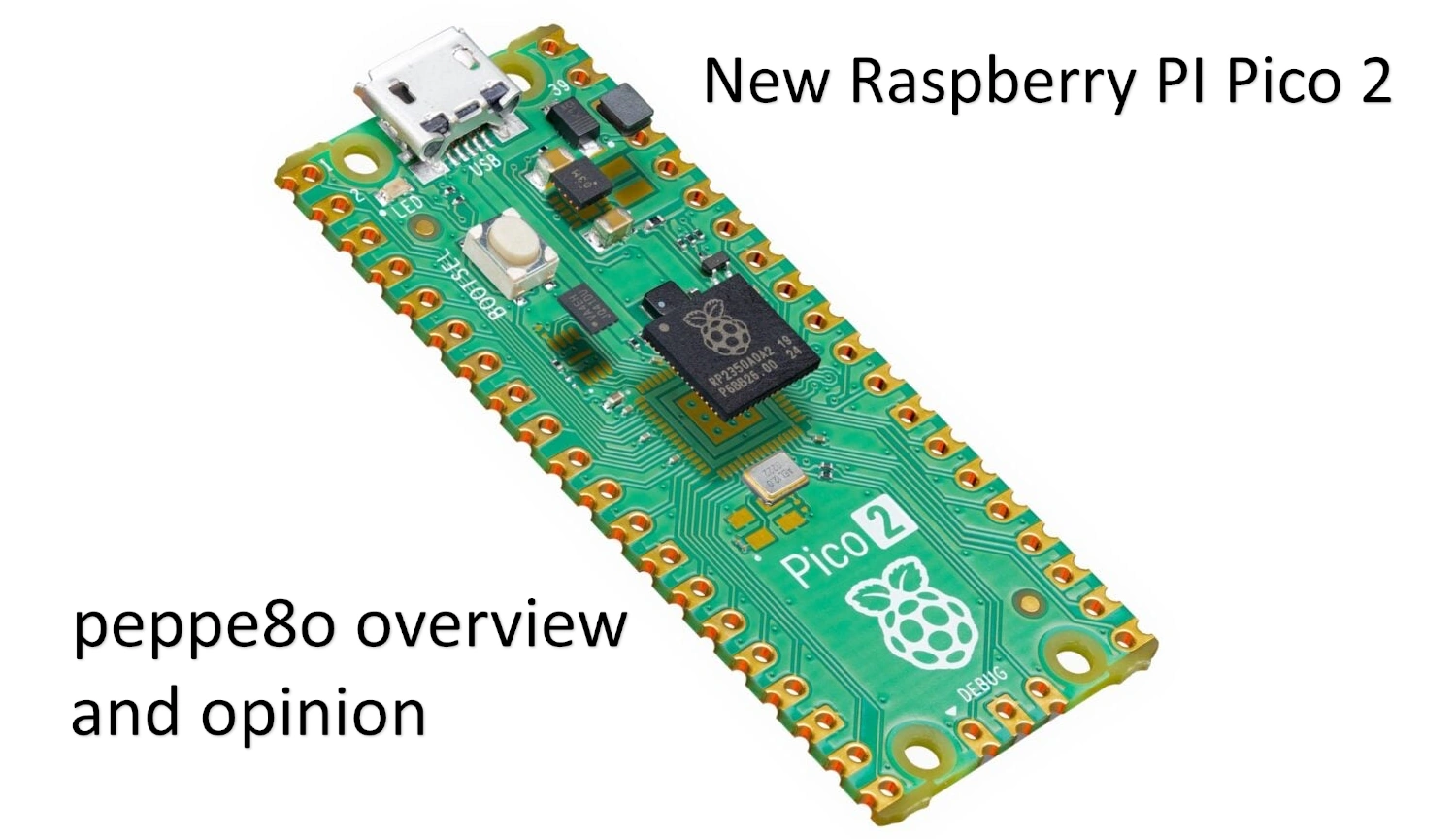Last Updated on 24th August 2024 by peppe8o
In this summer, the Raspberry PI company announced a new release of the Raspberry PI Pico series: the Raspberry PI Pico 2.
From a visual point of view, the new microcontroller may appear the same as the previous one. Still, some changes happened inside, which should bring more power and flexibility to this microcontroller. In the following chapters, I will go deep into the main changes.
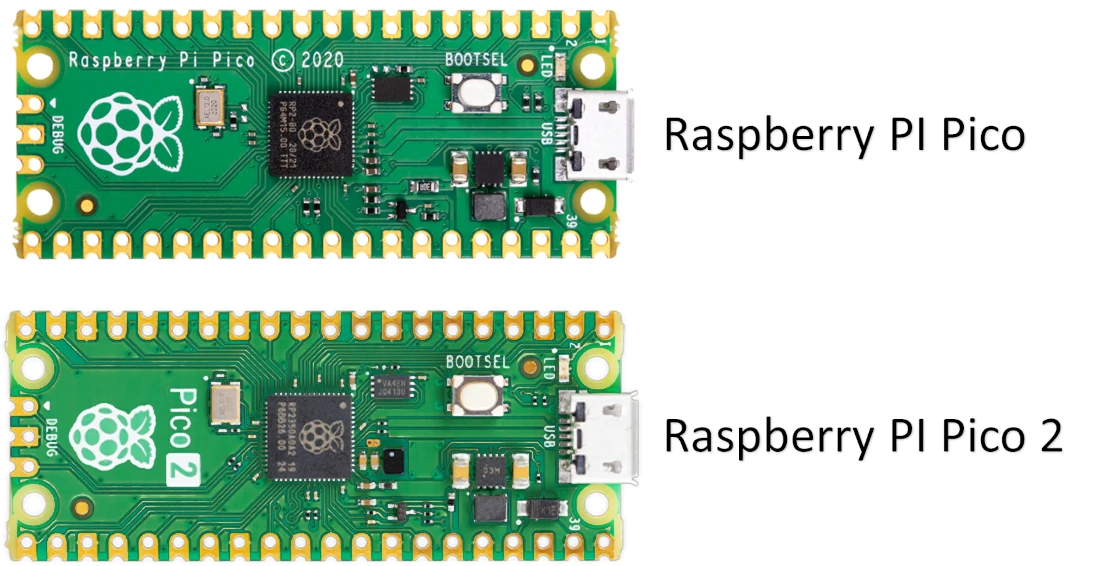
I still don’t have this board for tests (as the Raspberry PI company doesn’t send me the boards for preview and tests), so I will show you my insights from the documentation released. By the way, the Raspberry PI states that the new board is software- and hardware-compatible with Raspberry Pi Pico. So you can use the existing projects for Rapsberry PI Pico also with this board.
In this article, I will consider the Raspberry PI Pico W similar to the Raspberry PI Pico, except for some minor notes, as it mounts the same hardware plus the connectivity chip.
The Form Factor
The two boards have the same sizes and internal dimensions, so if you have a case or an enclosure with the old Raspberry PI Pico that you want to re-use for the new Raspberry PI Pico 2, you should be able to change the microcontroller without difficulties:
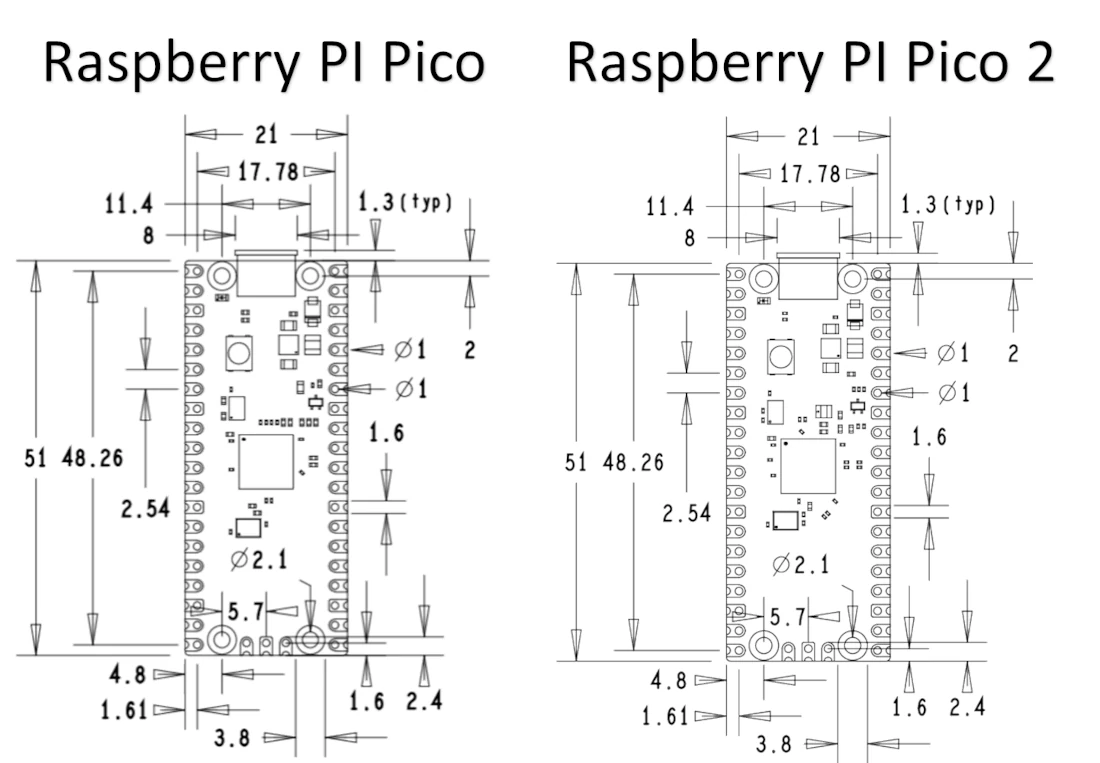
As you can see from the picture, the overall board size remained in the 51mm x 21mm. The PIN holes remained with the same size, as well as the mounting holes. From this point of view, nothing changed.
As we’ll see in the following chapter, compared to the Raspberry PI Pico W, the 3 debugging holes have been moved back again to the lower border of the microcontroller.
Pinout
Also, the PIN numbering and functions remained unchanged. This will enable you to use the same PIN connections from Raspberry PI Pico’s projects with the new Raspberry PI Pico 2 board. For a detailed description of the PINs functions, you can refer to my Raspberry PI Pico Pinout (including Pico W version) article.
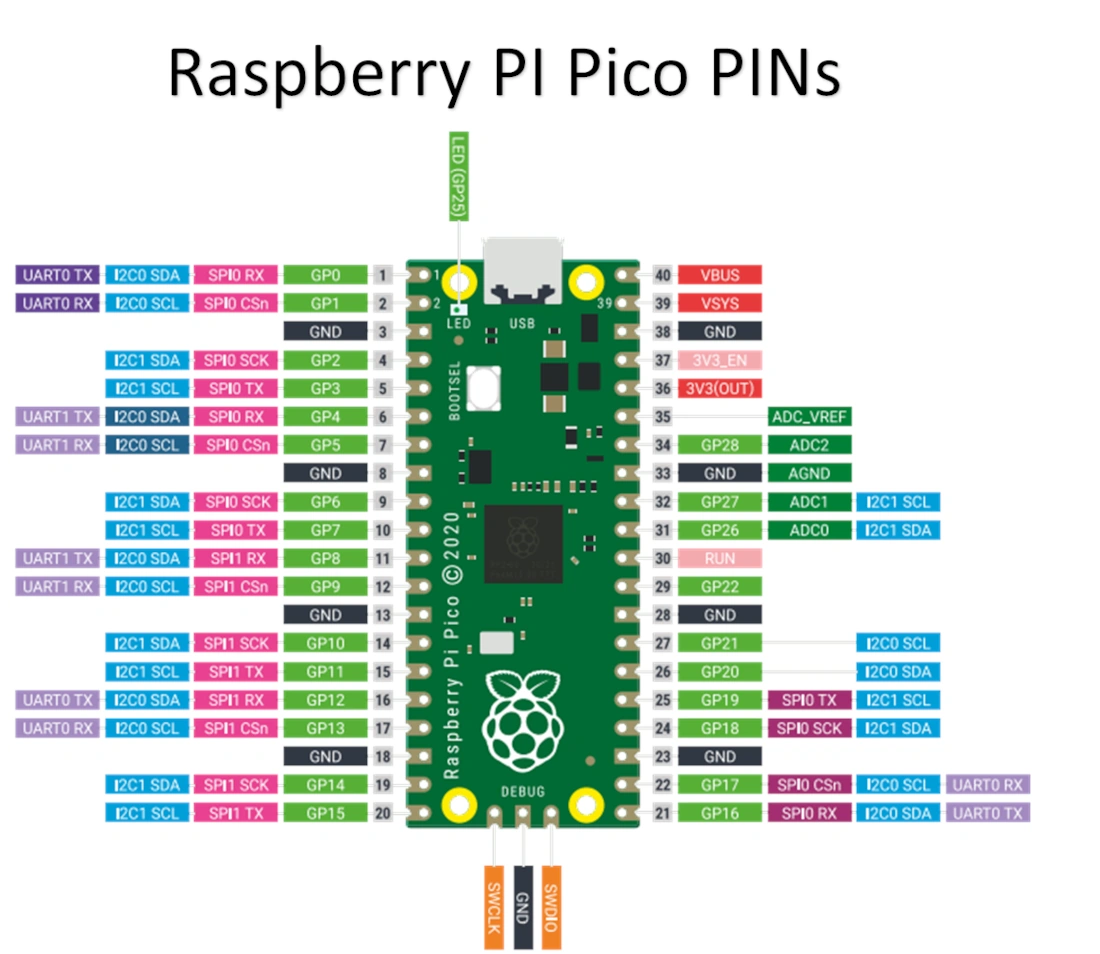
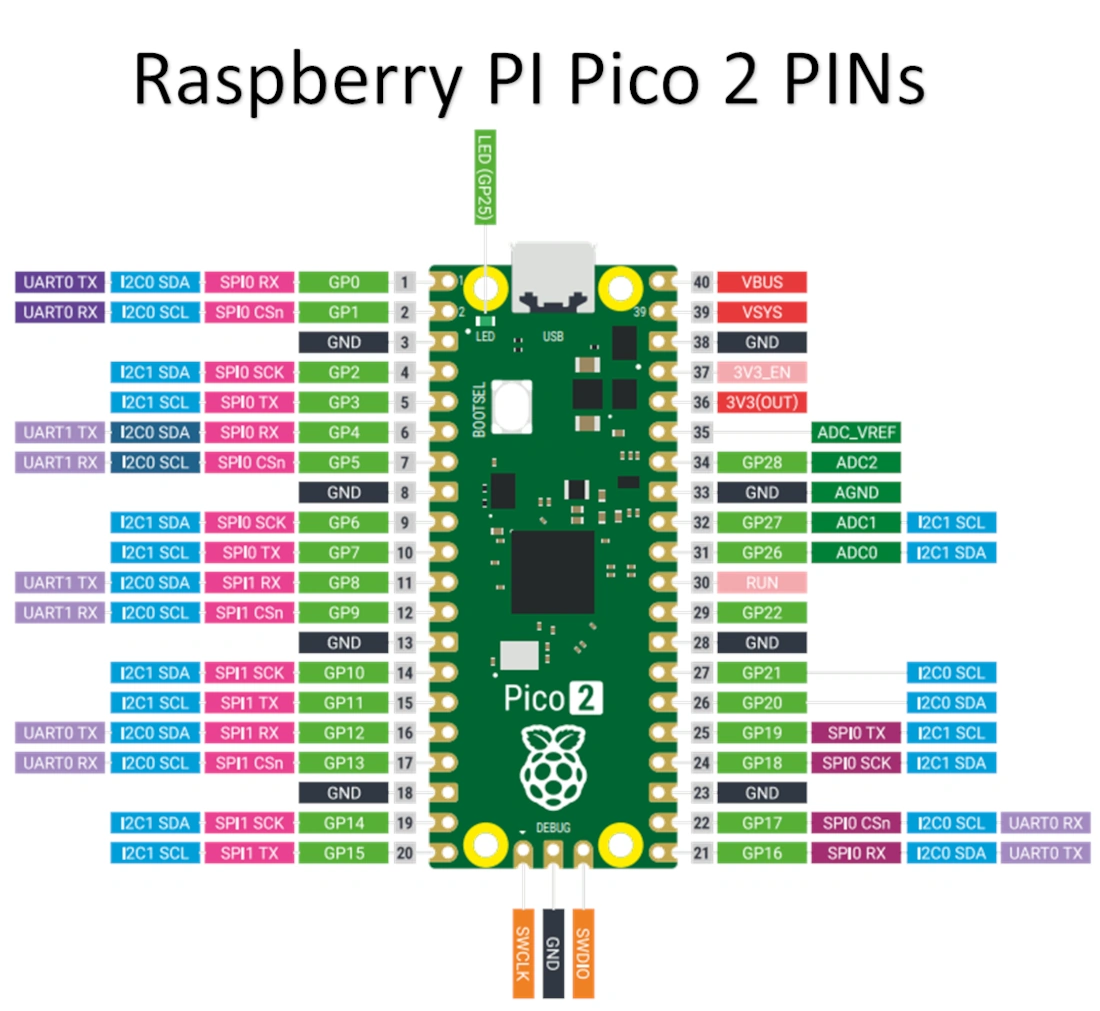
Here’s the small difference I’ve previously talked about, compared with the Raspberry PI Pico W. This board mounts the 3 debugging PINs (SWCLK, GND, and SWDIO) between the CPU and the connectivity chips:
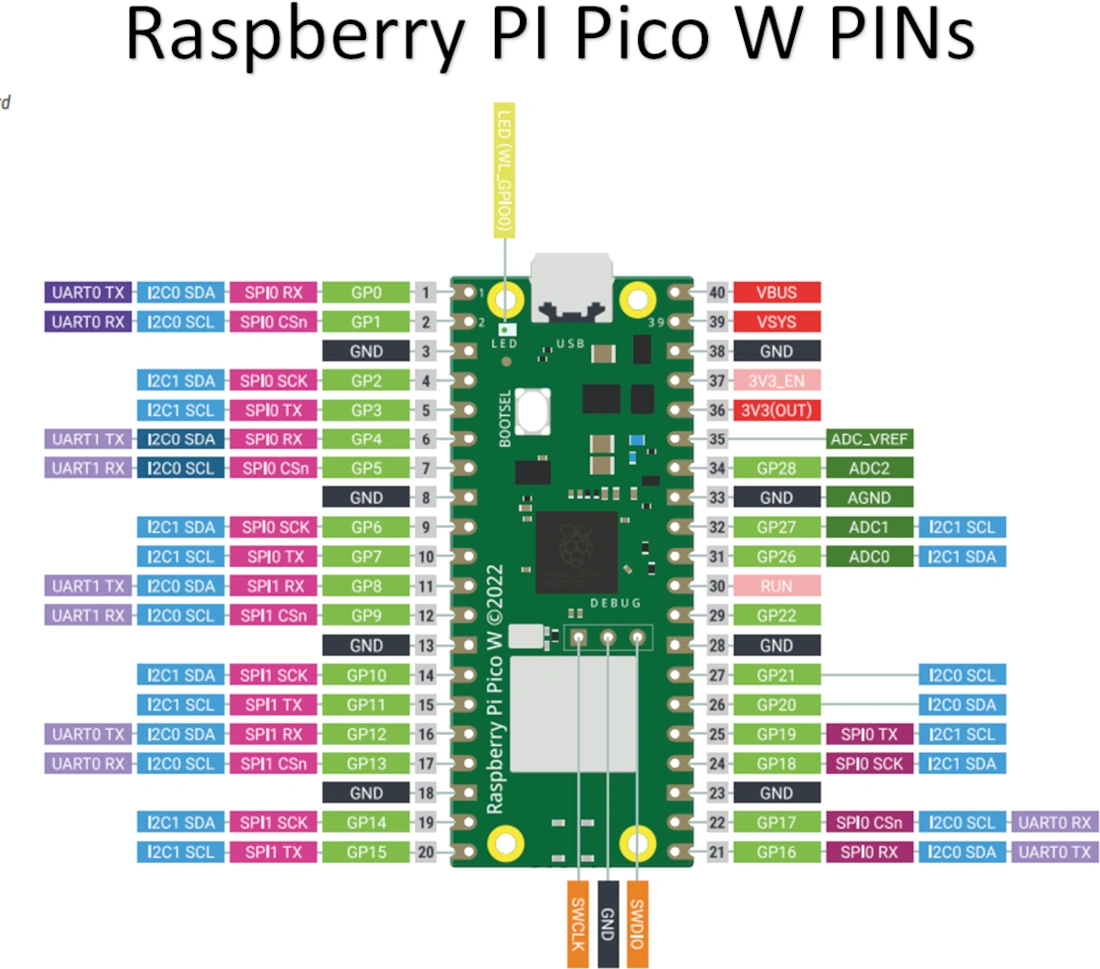
Recommended Operating Conditions
Also the operating conditions remained unchanged. Please note that the Raspberry PI Pico W supports a lower max temperature (probably because of the constraints coming from the connectivity board:
| variable | RPI Pico | RPI Pico W | RPI Pico 2 |
|---|---|---|---|
| Operating Temp Max (including self-heating) | 85°C | 70°C | 85°C |
| Operating Temp Min | -20°C | -20°C | -20°C |
| VBUS | 5V ± 10% | 5V ± 10% | 5V ± 10% |
| VSYS Min | 1.8V | 1.8V | 1.8V |
| VSYS Max | 5.5V | 5.5V | 5.5V |
With all the boards, the recommended maximum ambient temperature of operation is 70°C.
CPU and RAM
Here there are the main, radical improvements with the new Raspberry PI Pico 2 board. It uses the new RP2350 chip, compared to the RP2040 from the previous Raspberry PI Pico boards.
The meaning of the RP2350 naming is explained in the following picture:
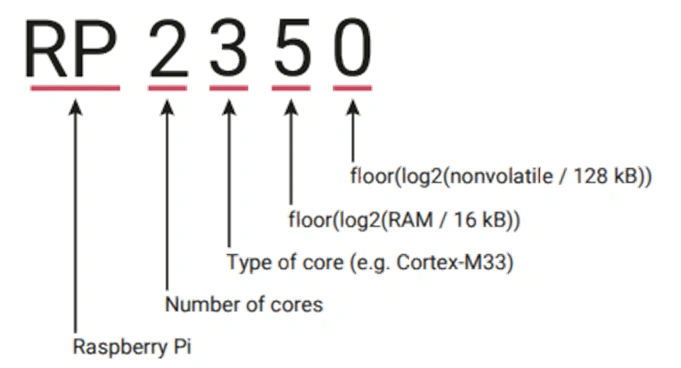
Where:
- 2 (number of processor cores) indicates a dual-core system
- 3 (type of processor) indicates Cortex-M33 or Hazard3
- 5 (internal memory capacity) indicates at least 25 × 16 kB = 512 kB
- 0 (internal storage capacity) indicates no onboard nonvolatile storage (the RP2350 uses external flash)
Moreover, the RP2350 has 520 kB of main system SRAM.
The new Raspberry PI Pico 2 CPU brings performance improvements, togheter with a RAM increase of the board. The following table summarizes the main differences with the Raspberry PI Pico:
| variable | RPI Pico | RPI Pico 2 |
|---|---|---|
| on-board flash | 2 MB | 4 MB |
| core clock speed | 133MHz | 150MHz |
| on-chip SRAM | 264 kB | 520 kB |
| Arm cores | Dual-core cortex M0+ | Dual Cortex-M33 |
| RISC-V cores | n/a | Hazard3 |
Besides the performance improvements, here’s a curoius entry in the RP2350: the Hazard3 cores, based on RISC-V architecture. This is an open-standard instruction set introduced about 10 years ago, where many CPU industries are looking with interest to find open-hardware alternatives to the current market movers. You can find more info about this standard in the Wikipedia RISC-V page.
To say the truth, I still can’t realize how to use these RISK-V cores, as well as they are not mentioned in the Raspberry PI official starting guide. So I bet there will be news in the near future.
The new RP2350 includes security improvements, including Arm TrustZone for Cortex-M, signed boot, 8 kB of antifuse OTP for key storage, SHA-256 acceleration, a hardware TRNG, and fast glitch detectors. Also upgraded interfacing capabilities are available, increasing from 2 PIO blocks (8 state machines total), to 3 PIO blocks (12
state machines total).
What about the WiFi?
The Raspberry PI Pico 2 doesn’t have any WiFi or Bluetooth connectivity. Eben Upton (the founder of Raspberry PI Foundation) declared that “before the end of the year, we expect to ship a wireless-enabled Pico 2 W, using the same Infineon 43439 modem as Pico W”.
Obsolescence
This feature is more important for industries using the Raspberry Pi Pico 2 in their products. The Raspberry PI company assures that the new board will remain in production until at least January 2040.
Raspberry PI Pico 2 Pricing
The Raspberry PI claims that the new microcontroller is availabel for $5 (plus shipping expenses, that sometimes are higher that the board price). At the date of this post, you probably can buy it only from the Raspberry PI approved resellers.
Final Thoughts
The new Pico 2 board introduces some performance improvements that could interest more the industries working with it than the DIY hobbists. Anyway, as the price is comparable with the old board (and t is fully compatible with that), it’s worth going to the new version. The only suggestion I can give is to wait for the W version (with WiFi), because having a connected microcontroller will make your projects reachable from remote, so smart.
References:
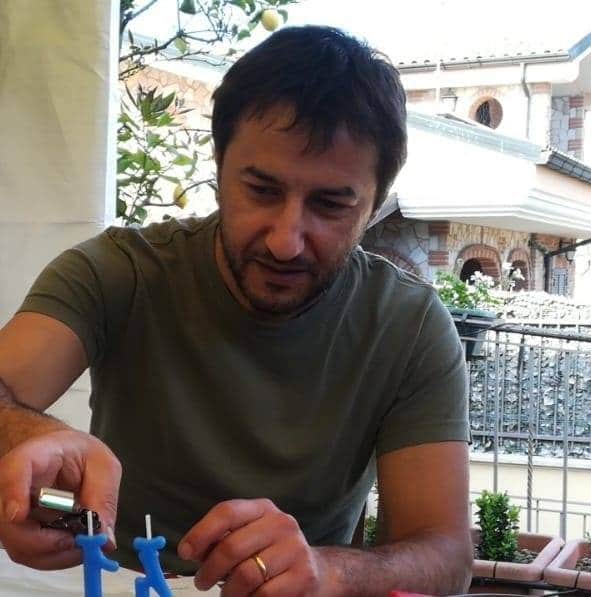
Open source and Raspberry PI lover, writes tutorials for beginners since 2019. He's an ICT expert, with a strong experience in supporting medium to big companies and public administrations to manage their ICT infrastructures. He's supporting the Italian public administration in digital transformation projects.

